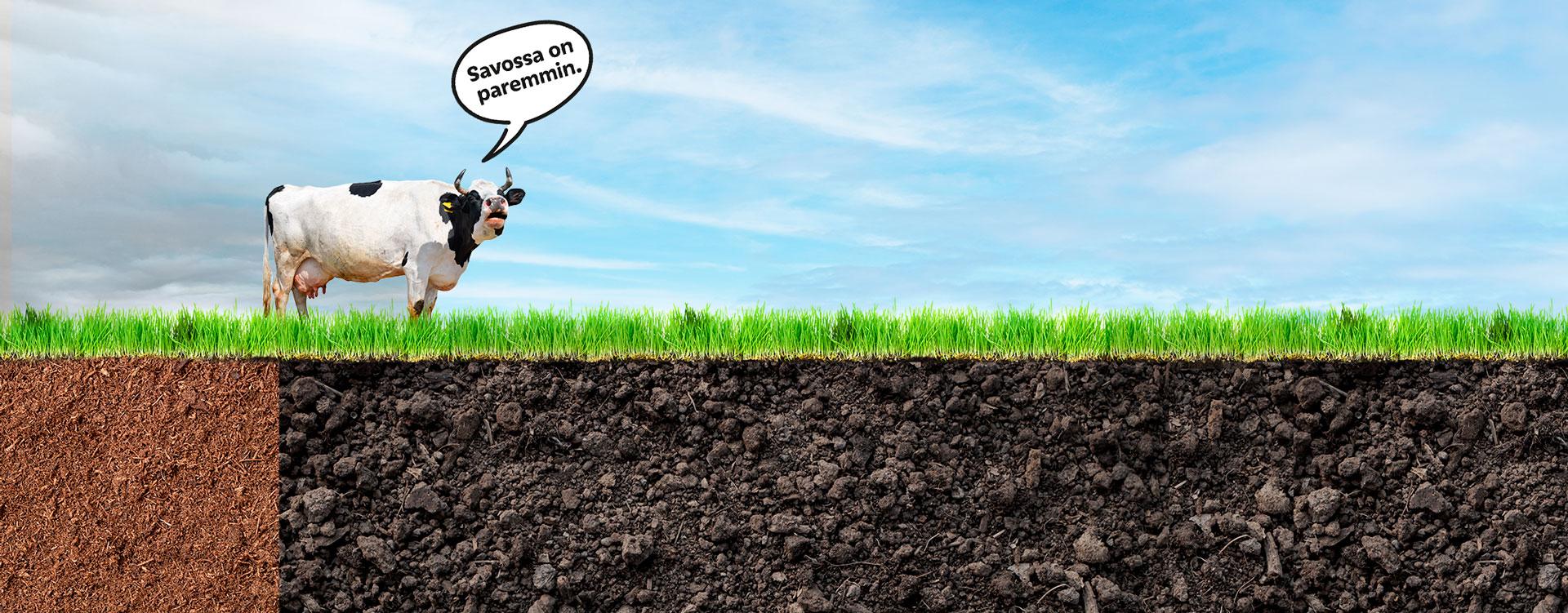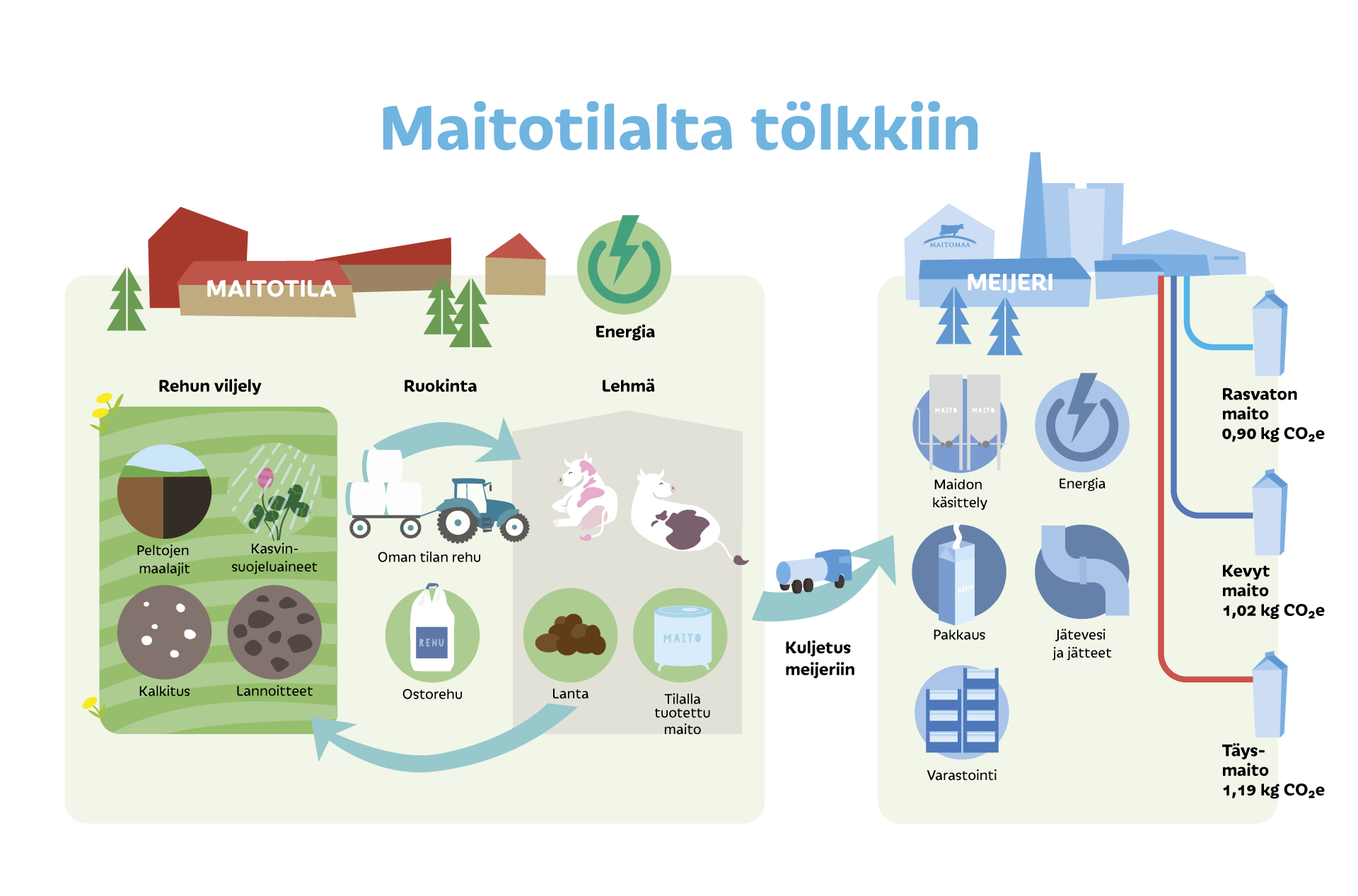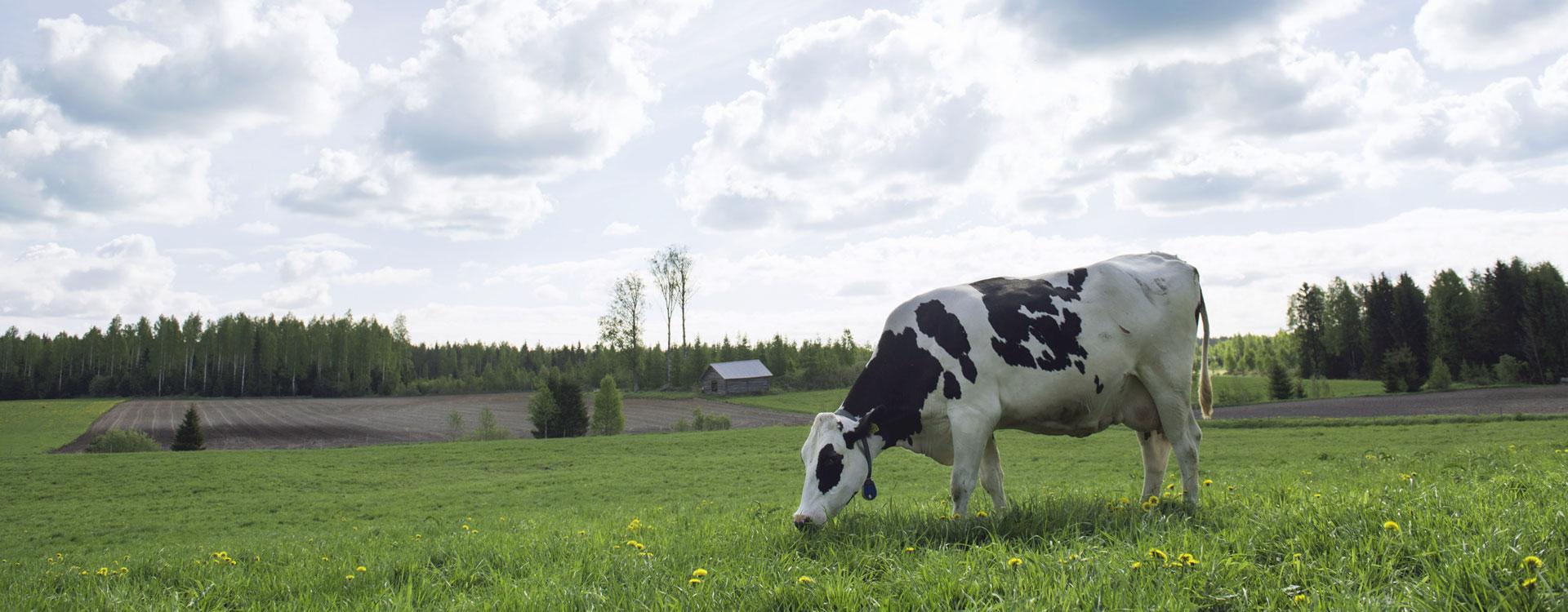First operator in Finland to display the carbon footprint information on milk cartons
We examined the carbon footprint of our entire milk production chain, from the fields where the animal feed is grown all the way to the milk carton, including the effects of peat fields and changes in land use – and we’re the first creamery in Finland to do so! We are also trendsetters on the milk shelves, as we were the first to print product-specific figures on our milk cartons for all the people to see. We hope this will encourage other operators to be transparent and offer consumers the opportunity to compare the emission effects of their grocery purchases.
The carbon footprint calculation includes all of our farms, of which there are over a hundred. This means that our emissions figure not only reflect the carbon footprint of a selected group or individual producers but also includes the greenhouse gas emissions of our production as a whole. Carbon footprint analysis is a tool that makes reducing greenhouse gas emissions more efficient – once you know where the emissions come from, it is easier to do something about them.
Milk from a climate-friendly area of mineral-rich soil
The carbon footprints of our milk are as follows:
- Skimmed milk 0.90 kg CO2e per liter of milk
- Semi-skimmed milk 1.02 kg CO2e per liter of milk
- Whole milk 1.19 kg CO2e per liter of milk
The calculation showed the climate benefits of mineral-rich soils compared to peatlands. According to the Natural Resources Institute Finland, although peat fields account for only about 10% of the cultivated land area in Finland, they cause more than half of the greenhouse gas emissions from agriculture. The dairy farms of Maitomaa are located in Eastern Finland in areas with relatively low amount of peat soil, which is why the operation generates fewer emissions. On Maitomaa’s farms, the portion of peat fields is only 2.5% on average.
Continuous work towards a more sustainable milk production chain
Peat fields are only one of the factors that make up the carbon footprint of the milk production chain. At our dairy farms, the generation of greenhouse gas emissions are influenced by choices related to fertilizers, feed and energy use, as well as manure treatment, among other things. At the creamery, our carbon footprint is reduced by the use of renewable energy and better packaging choices, for example.
The calculations were carried out in cooperation with Envitecpolis Oy.

 Suomeksi
Suomeksi



